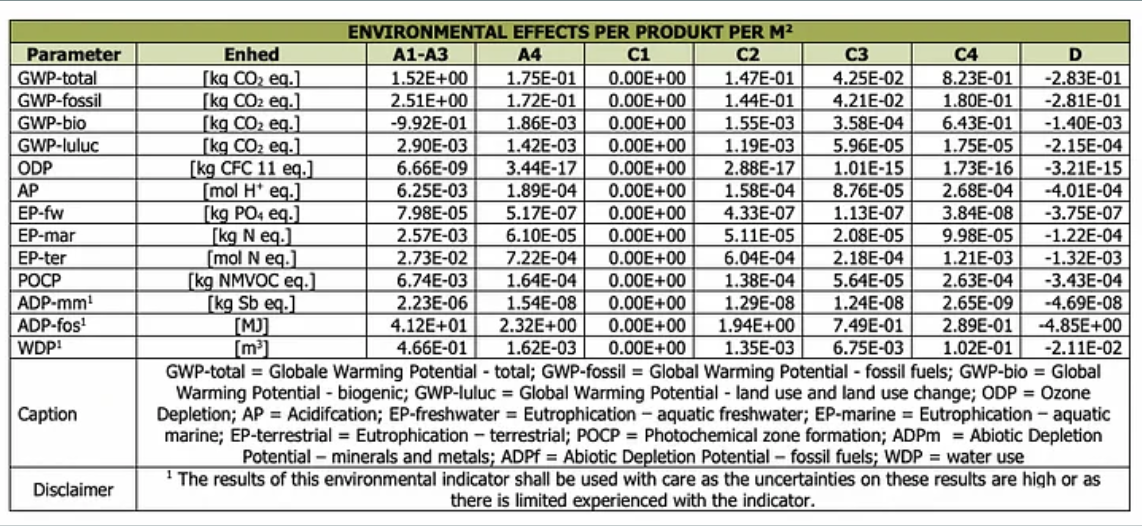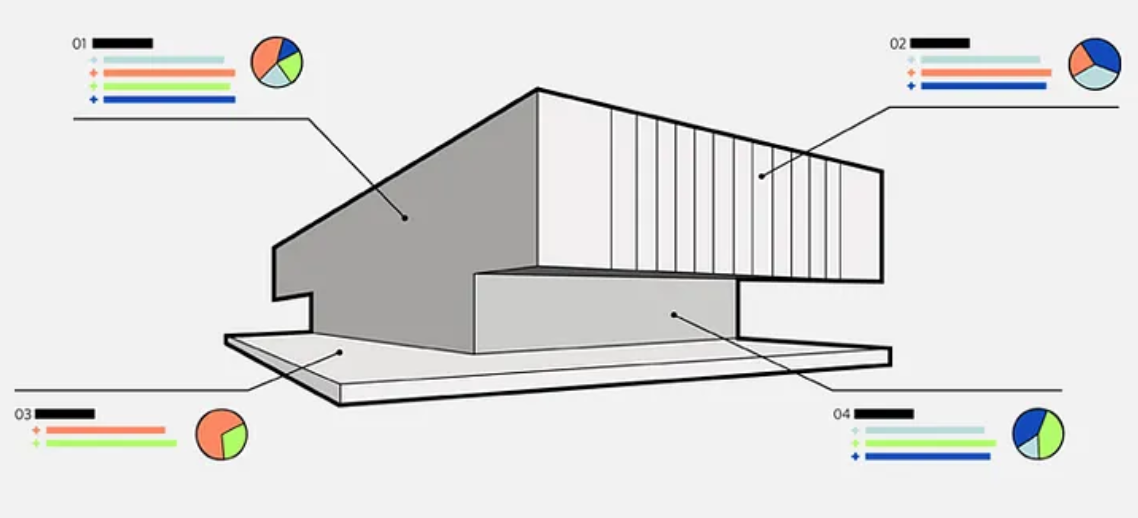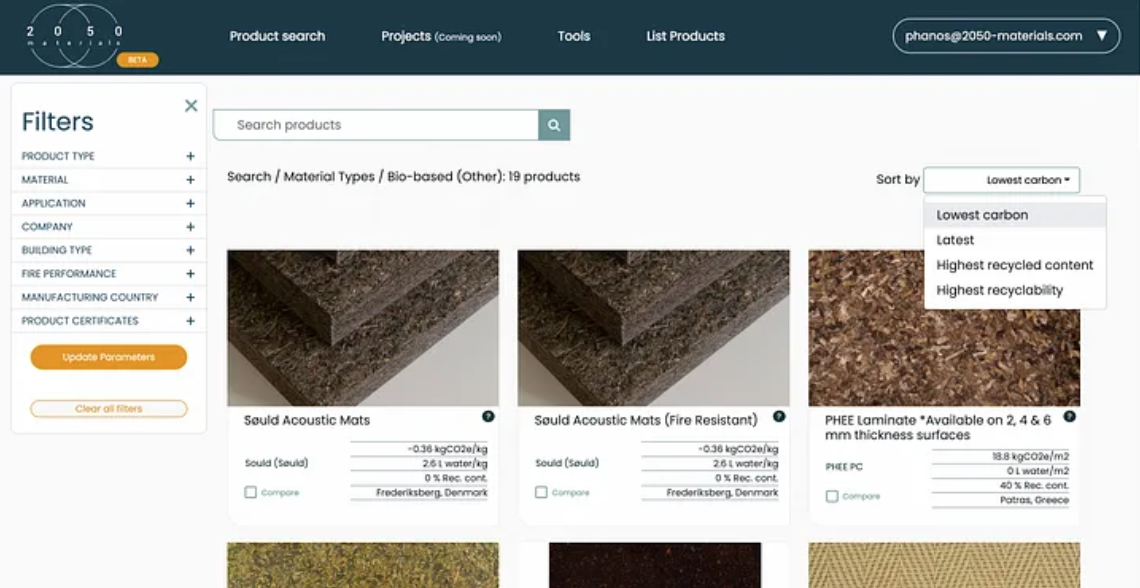Life Cycle Assessment — An Introduction
What is a Life Cycle Assessment (LCA)?
Life-cycle assessment / LCA (also known as life cycle analysis) is a methodology for assessing environmental impacts associated with all the stages of the life cycle of a system.
In the context of construction, a system may be anything from a single product (e.g. a brick) to an entire building.
LCA takes into consideration all the steps that occur during the lifetime of each system, from raw material extraction and manufacturing, to distribution and usage as well as the final disposal.
What is the output of a Life Cycle Assessment?
A completed LCA provides us with the following information:
- What products were created in the process
- What the environmental impacts of the process are (these include carbon emissions, toxicity impacts, etc.)
- How much waste was generated in the process
Unfortunately, the output of LCAs have traditionally been overly complex to understand and communicate to non-experts. Read on to see how we are fixing that.

Not the friendliest table out there…
Do LCAs follow a standard?
In the construction sector, LCAs follow standards such as ISO 14040/14044, ISO 14025, EN 15804 or ISO 21930 standards.
 While life cycle assessments follow standards, it’s important to understand that the data used (aka LCI) and assumptions taken during the analysis can introduce a level of uncertainty in the results.
While life cycle assessments follow standards, it’s important to understand that the data used (aka LCI) and assumptions taken during the analysis can introduce a level of uncertainty in the results.
What are the benefits of conducting a building LCA

Conducting an building-level life cycle assessment provides several benefits:
- Reduce environmental impacts
By conducting an LCA (especially early on in the design process) one can reduce the impacts of a project by identifying the highest performance materials, site, and approach.
→ “If you can’t measure it you can’t manage it” - Obtain certification credits
LCA can provide significant credits in BREEAM, LEED v4 and many other certification schemes. - Ensure compliance with regulations
The construction sector is beginning to introduce regulations to reduce the impacts of buildings deriving both from the energy use (operational impacts) as well as from materials (embodied impacts). Conducting an LCA is expected to become a mandatory part of many of these regulations. - Benchmark design to standards or other projects
When an LCA is simplified enough, it can become an amazing tool to communicate impact to clients and other stakeholders in the process. - Transparency (!!)
A sustainable future is one where everyone can access information. Real estate clients, investors and tenants are increasingly demandign more transparency over a building’s environmental impacts.
What should you look our for in a product-specific LCA?
Product LCAs often come in the format of an Environmental Product Declaration. Here’s a few data points to look out for in an EPD.
- Third party verification
→ Has an independent party verified the assessment? - Functional unit / Declared unit
→ On what unit are the impacts measured on? Make sure to only compare two products when the unit is the same or when the data is transformed. - Boundaries
→ The LCA boundaries often include only the “cradle-to-gate” (A1–A3) impacts, meaning that the transport, use and end-of-life impacts are not considered. These missing components can be extremely important, especially in projects focusing on circularity. - Impact metrics
→ The output of this assessment includes metrics such as Carbon Dioxide (GWP), Freshwater use (FW), Acidification Potential (AP), Eutrophication Potential (EP), Photochemical Ozone Creation Potential (POCP) and Abiotic Depletion Potential (ADP) - Recycling aspects
→ To asses the amount of product which comes from virgin materials or non-renewable energy, a designer can look at metrics like: secondary material (SM), Use of renewable secondary fuels (RSF), Materials for energy recovery (MER) and Materials for recycling (MFR)
We simplify LCAs to democratize sustainable construction
2050 Materials democratizes sustainability assessments by doing a lot of the work needed to collect, structure and simplify LCA data. We do all this empower you to design and build for a healthier future.

For more information about how to extract, and use data from the 2050 platform, check out our other articles.
Related articles

Climate-Resilient Materials for the Built Environment: A Data-Centred Prime
As climate volatility intensifies, resilience metrics are fast becoming as critical as carbon data in material selection. This article outlines why adaptation is now a design imperative, how materials can be evaluated through a systems lens, and what KPIs project teams should demand. From self-healing concrete to fire-rated façades, we present a structured taxonomy of resilient materials, explain how to embed this intelligence into digital design workflows, and propose next steps for specification, benchmarking, and procurement.
Read more
The Most Interesting Low Carbon Products in Office Design
In this article and collection, we highlight 11 outstanding products that contribute to a lower carbon footprint in office design.
Read more
Top Low Carbon Building Boards: Performance, Benefits, and Use Cases
The building boards highlighted in this article and collection showcase low-carbon innovation in modern construction.
Read more